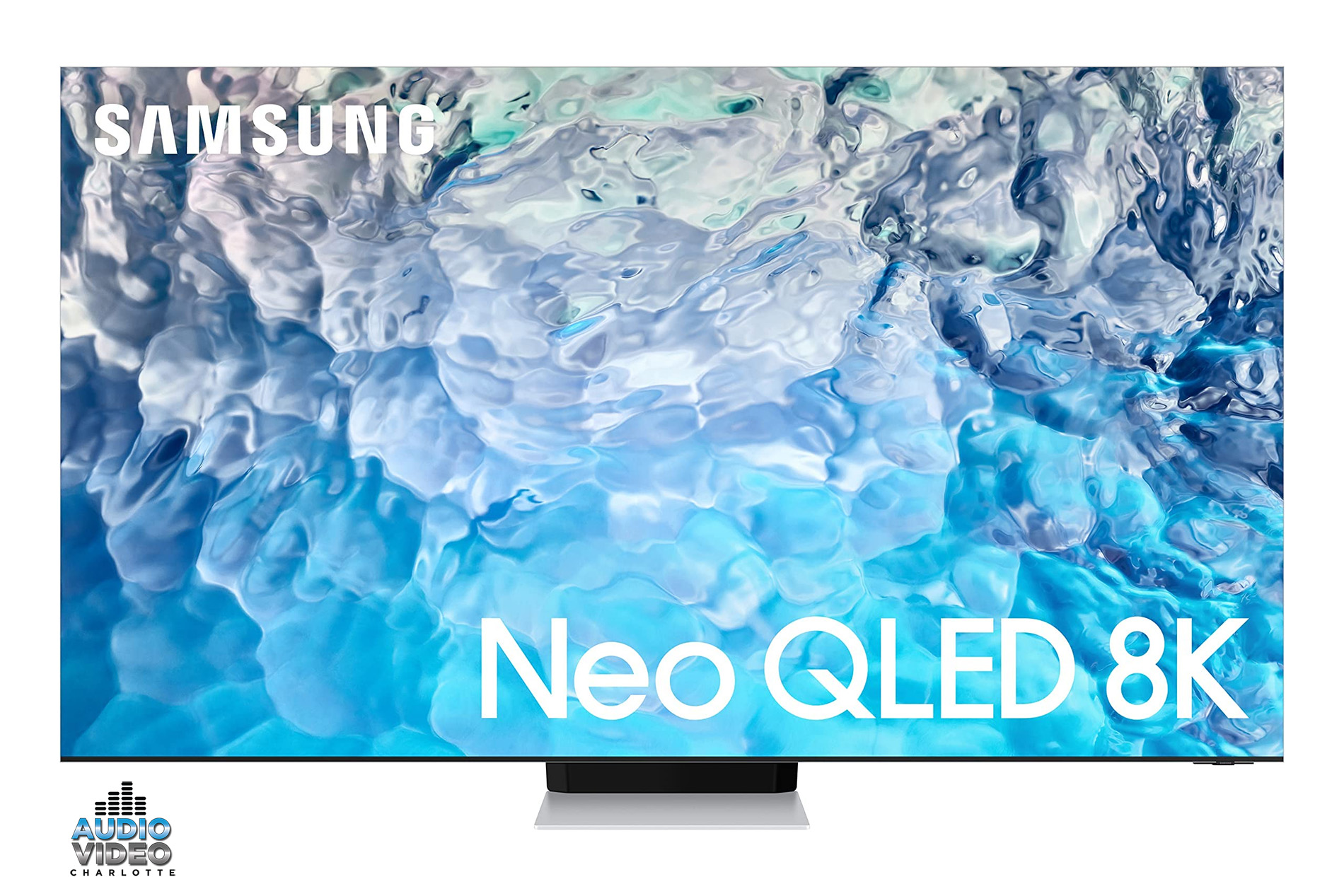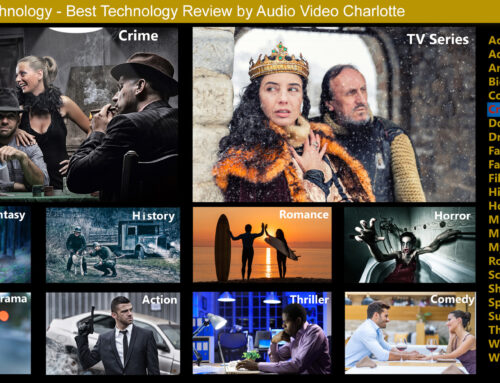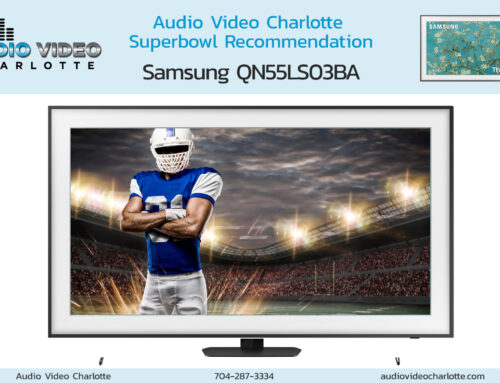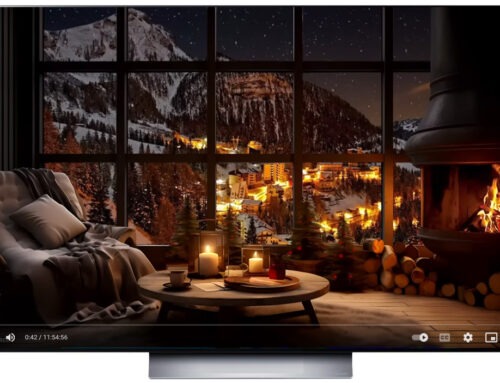What to know about 8K TV technology in 2023
In the world of home entertainment, a new era is dawning, one that promises to redefine how we experience television. The emergence of 8K TVs has ushered in a visual revolution, boasting the ability to deliver breathtaking images with a staggering four times the pixel count of their 4K counterparts. 8K technology is becoming increasingly mainstream in the AV industry, and many top TV manufacturers offer a few models in 8K resolution. Despite entering the market, very little content is available on streaming services. Here’s what to know about 8K TV technology in 2023 and why now is the ideal time to embrace this transformative technology.
What is an 8K TV?
At the forefront of visual innovation, an 8K TV represents a monumental leap in display technology. To fully understand the magnitude of 8K technology, it’s crucial to understand the pixel landscape. While traditional HDTVs of yesteryears adhered to the 1080p standard, boasting 1,920 pixels horizontally and 1,080 vertically, 8K TVs redefine the concept of resolution. With an astonishing 7,680 pixels horizontally and 4,320 vertically, these screens deliver unparalleled detail and clarity that was once exclusive to digital cinema projectors in movie theaters. The result is an immersive visual experience that brings every scene to life with breathtaking precision, making 8K TVs the vanguard of home entertainment.
Quality Upgrades in 8K TVs
Beyond the 7,680 pixels, what will you see as the most significant difference visually between a 4K and an 8K TV? Resolution! These TVs have some serious processing power. To handle the massive amount of data required for 8K resolution, 8K TVs have powerful processors that can upscale lower-resolution content to 8K, enhancing the image quality.
8K TVs also display incredibly detailed and sharper images. HDR on 8K TVs also supports high dynamic range (HDR) content, which allows for a broader range of colors and a higher contrast ratio, resulting in more lifelike images. It’s the best of the best when it comes to viewing. Going hand-in-hand with resolution and HDR is overall display technology. OLED and QLED displays offer deeper black colors, brighter whites, and more vivid colors than traditional LCDs, which is common in the 4K versions of those identical TVs but is only better with the 8K versions. You can read our blog about 4K TV offerings HERE.
The Powerhouse Engine
As you look deep into the technology that supports an 8K TV, you will find a powerhouse engine designed to handle an immense amount of data. These advanced processors, equipped with cutting-edge algorithms, efficiently process and upscale content to 8K resolution. The final result is a seamless and immersive viewing experience, where every detail, where colors are vivid, and motion is smooth.
One of the standout features from 4K to 8K is its ability to upscale lower-resolution content, such as 4K or even Full HD, to 8K quality. But how? The algorithms analyze and upscale frame by frame, intelligently filling in the missing pixels and enhancing the overall image quality. In addition to mixing pixels seamlessly, its high frame rate makes motion appear smoother while minimizing movement. The increased processing capabilities of an 8K TV enable it to handle demanding content, such as fast-paced sports on your Sunday game day or action-packed movies on a family movie night.
One thing to mention here is that many 8K TVs, especially with Samsung, are being shipped with an eco mode as default. So when you start your TV and use it, you might not get the actual 8K image on the screen. The energy consumption of 8K displays can be up to twice as high as 4K TVs. TV manufacturers must meet the imposed limits of various countries worldwide to meet energy efficiency indexes. Read more HERE.
What is Future-Proofing, and Where Does 8k Technology Fit In?
Future-proofing technology is a term used to describe the practice of selecting, implementing, or designing technological solutions or products. Future-proofing ensures that the technology will remain relevant, functional, and capable of meeting evolving needs and standards well into the future. It’s about making choices today that minimize the risk of obsolescence or the demand for frequent updates or replacements down the line.
Some critical aspects of future-proofing technology include:
- Longevity: Future-proofed technology is built to last.
- Scalability: Future-proofed systems are flexible and scalable, meaning they can adapt and grow to accommodate increased demands or changes in requirements without significant overhauls.
- Compatibility: Future-proofed technology is compatible with various current and potential future systems, software, and standards. It can seamlessly integrate with other tools and technologies.
- Upgradability: It’s relatively easy to upgrade or update future-proofed technology to meet changing needs, whether through software updates or hardware enhancements.
- Adaptability: Future-proofed solutions are adaptable to emerging trends and technologies. They can embrace new features or functionalities as they become available without requiring a complete overhaul.
- Standards Compliance: Future-proofed technology adheres to industry standards, ensuring it remains relevant and interoperable in a rapidly evolving technological landscape.
- Sustainability: Future-proofing can also involve considering the environmental impact of technology choices, ensuring that they align with sustainability goals and regulations.
Investing in an 8K TV can be seen as a future-proofing measure whether you are building a new home or updating the technology in your current. As different technology users like content creators and broadcasters catch up with AV installers and top-tier AV platforms, more 8K content will become available. By embracing 8K now, you ensure that your TV is ready to showcase the breathtaking visuals of future movies, documentaries, and sporting events as they will be released in this extraordinary resolution once it’s available for all.
8K TVs typically come with advanced seamless connectivity options, including HDMI 2.1, which supports higher bandwidths and refresh rates, enabling smoother and more immersive viewing experiences. The HDMI 2.1 standard enables the transmission of 8K signals at high frame rates, allowing you to enjoy 8K content from compatible devices.
What Is the Downside of Upgrading to 8K TV Technology?
Upgrading to an 8K TV from a 4K TV may not be necessary for everyone. Suppose you are looking for a TV upgrade that will give enhanced features for higher quality images, resulting in higher quality images for streaming and gaming. In that case, an 8K TV might be the answer you’re looking for. The resolution benefits of upgrading to an 8K TV may only be noticeable for larger TVs. You will see little of a change between 4K and 8K in smaller screen sizes. As with any upgrade, it’s essential to consider your needs and budget before deciding.
The biggest downside to 8K technology is the content that is out there. Content still needs improvement to match the accessibility of 4K TVs, and it may be some time before a significant amount of 8K content is available. While 8K content is still limited, streaming services like Netflix, Amazon Prime Video, and YouTube have started offering 8K content. Additionally, some high-end cameras and camcorders can capture 8K video. We expect more information on 8K TVs and their availability on streaming services soon.
Audio Video Charlotte, A Leading Audio-Video Installer in the Carolinas
Overall, 8K TVs are becoming more popular in the AV industry as manufacturers continue to improve the technology and make it more affordable for consumers. While these cutting-edge displays were once available to those willing to make a substantial investment, the landscape is rapidly changing. As the technology matures, the best 8K TVs are becoming increasingly accessible, making this the perfect moment to delve into the 8K’s unparalleled picture quality and immersion.
Knowing very little 8K content is available on streaming services is the biggest drawback to purchasing, but these TVs have some longevity. If you use an upgraded streaming device that delivers 8K content, you won’t have to worry about missing out on content as it becomes available. Need help making a purchasing decision? Audio Video Charlotte’s professional AV experts will help you decide which TV is best for your space and can even install it. Wait to buy and shop with us to know you are getting your home’s best TV and technology. Call us today at 704-287-3334!






